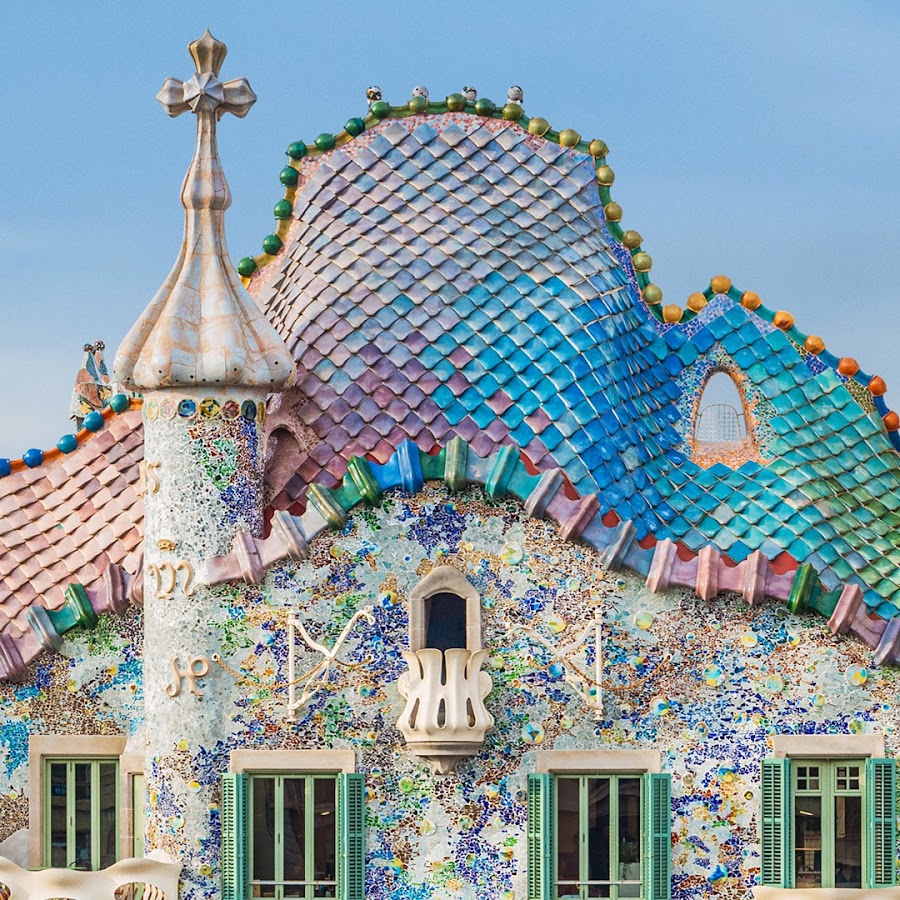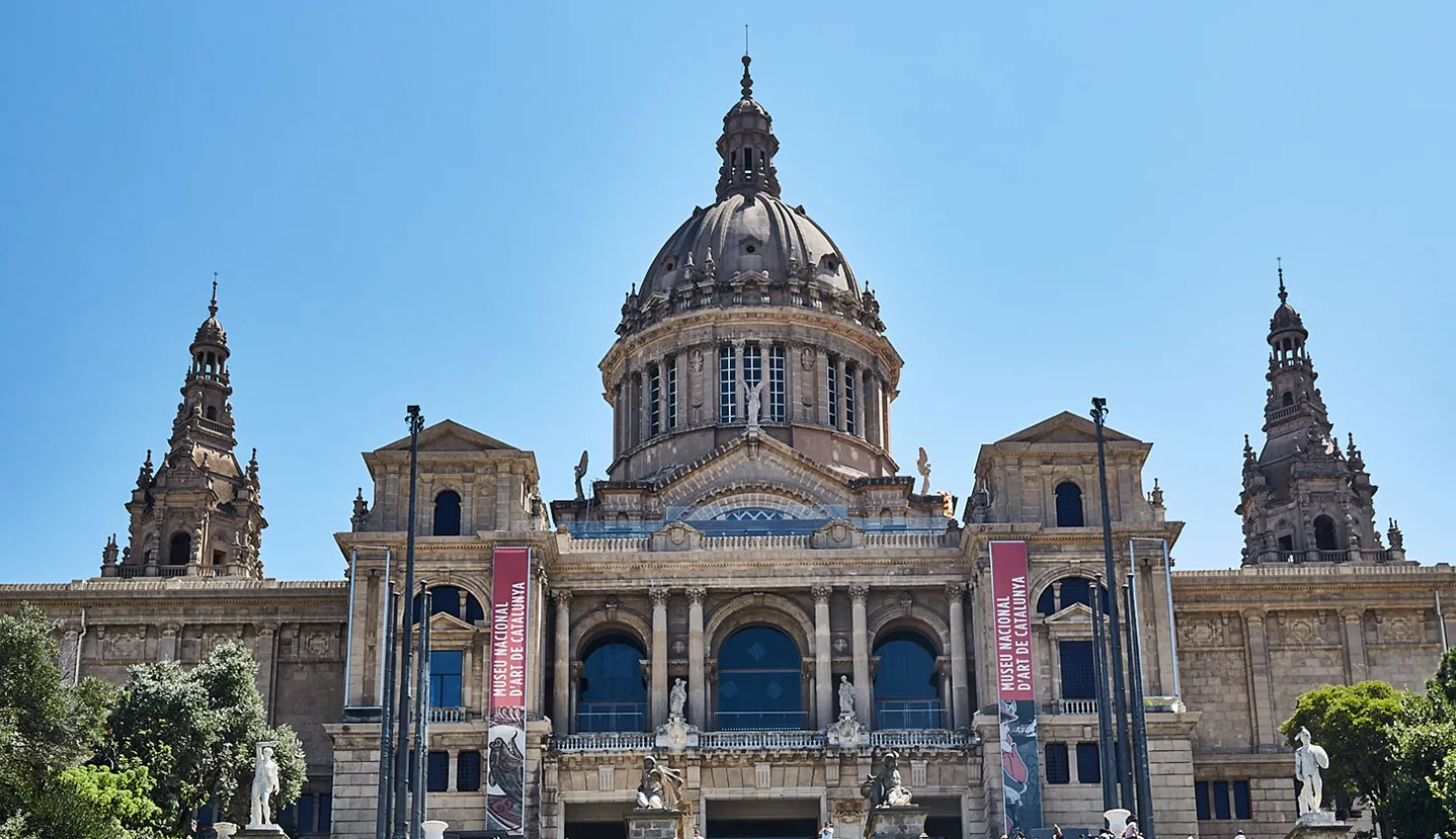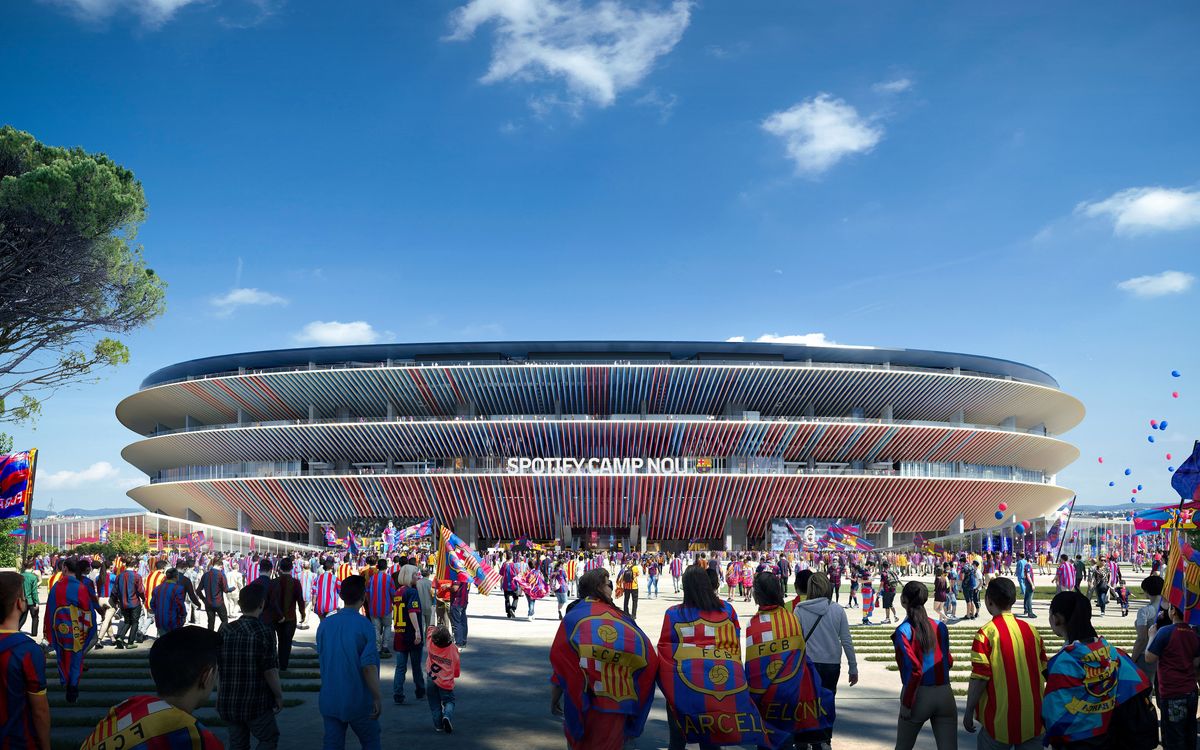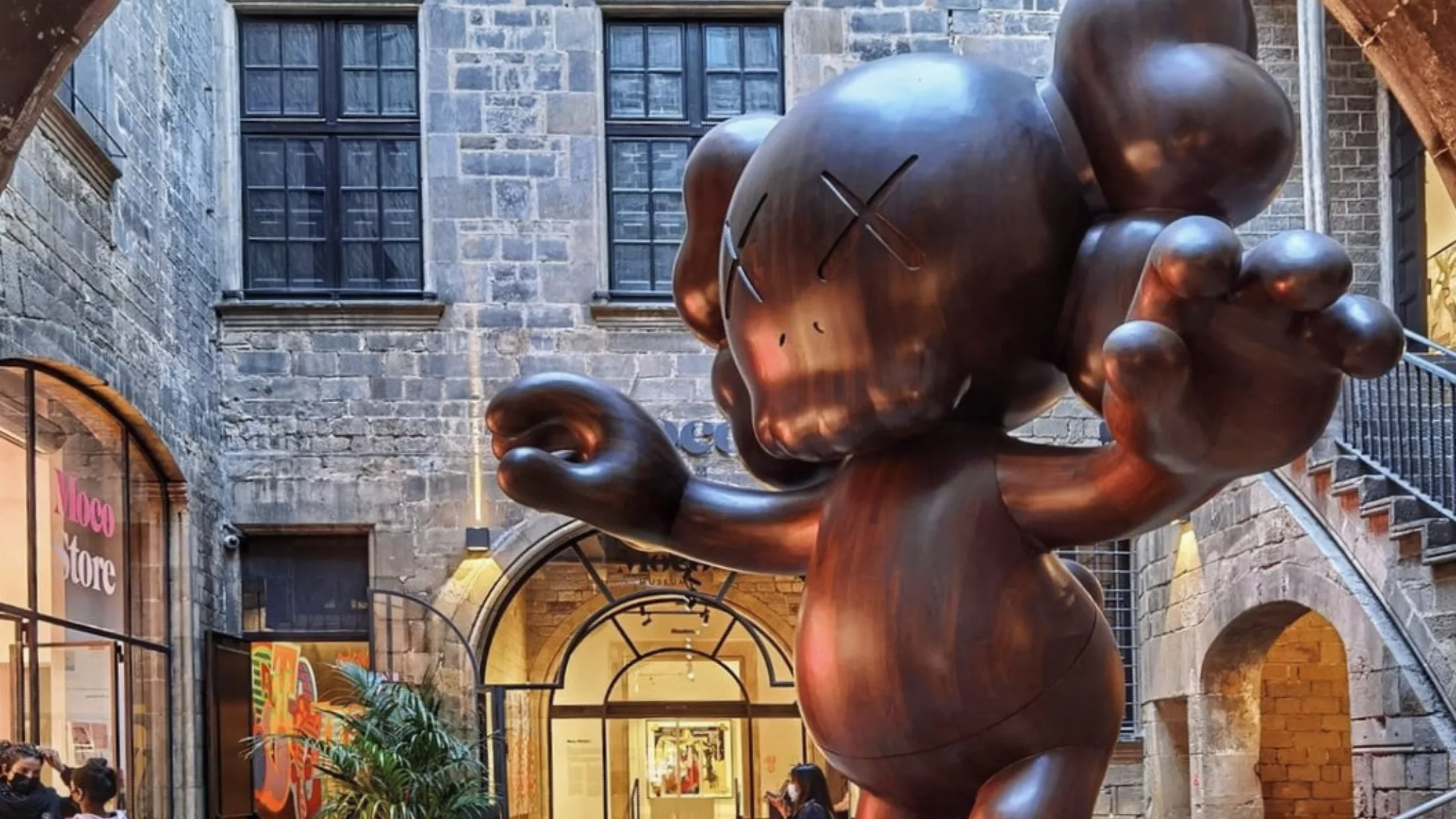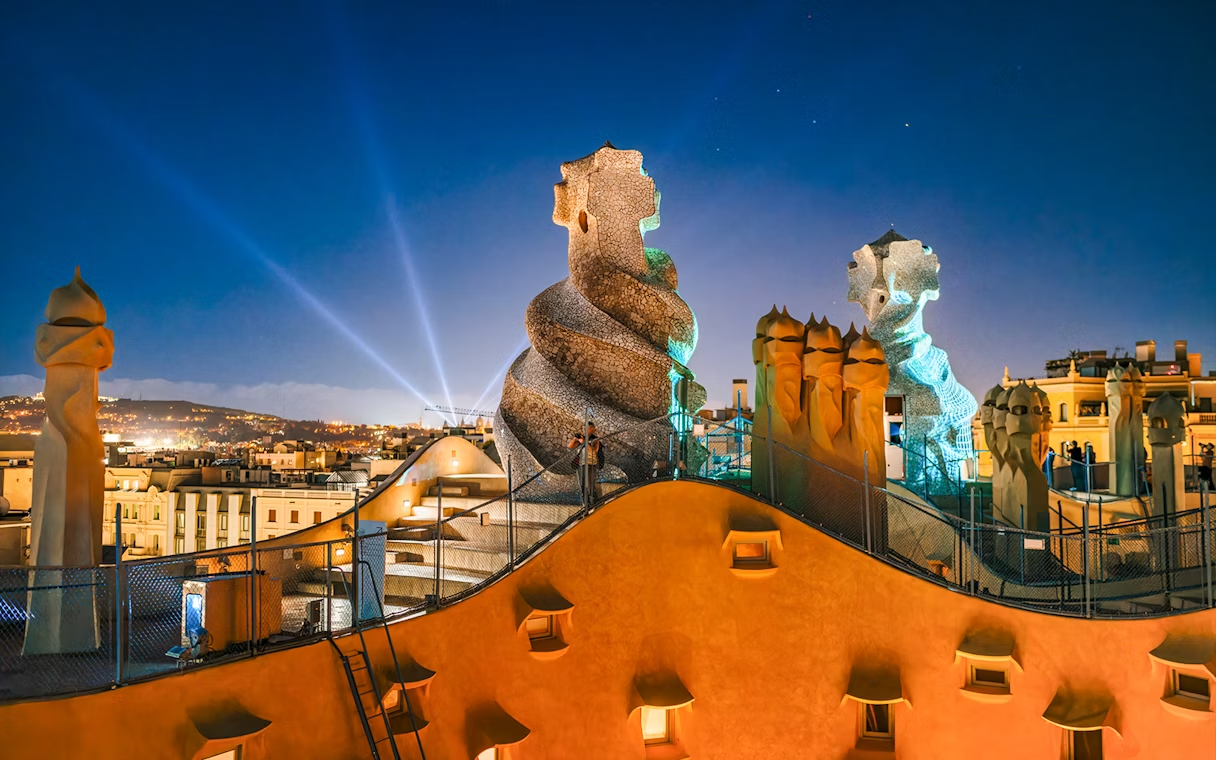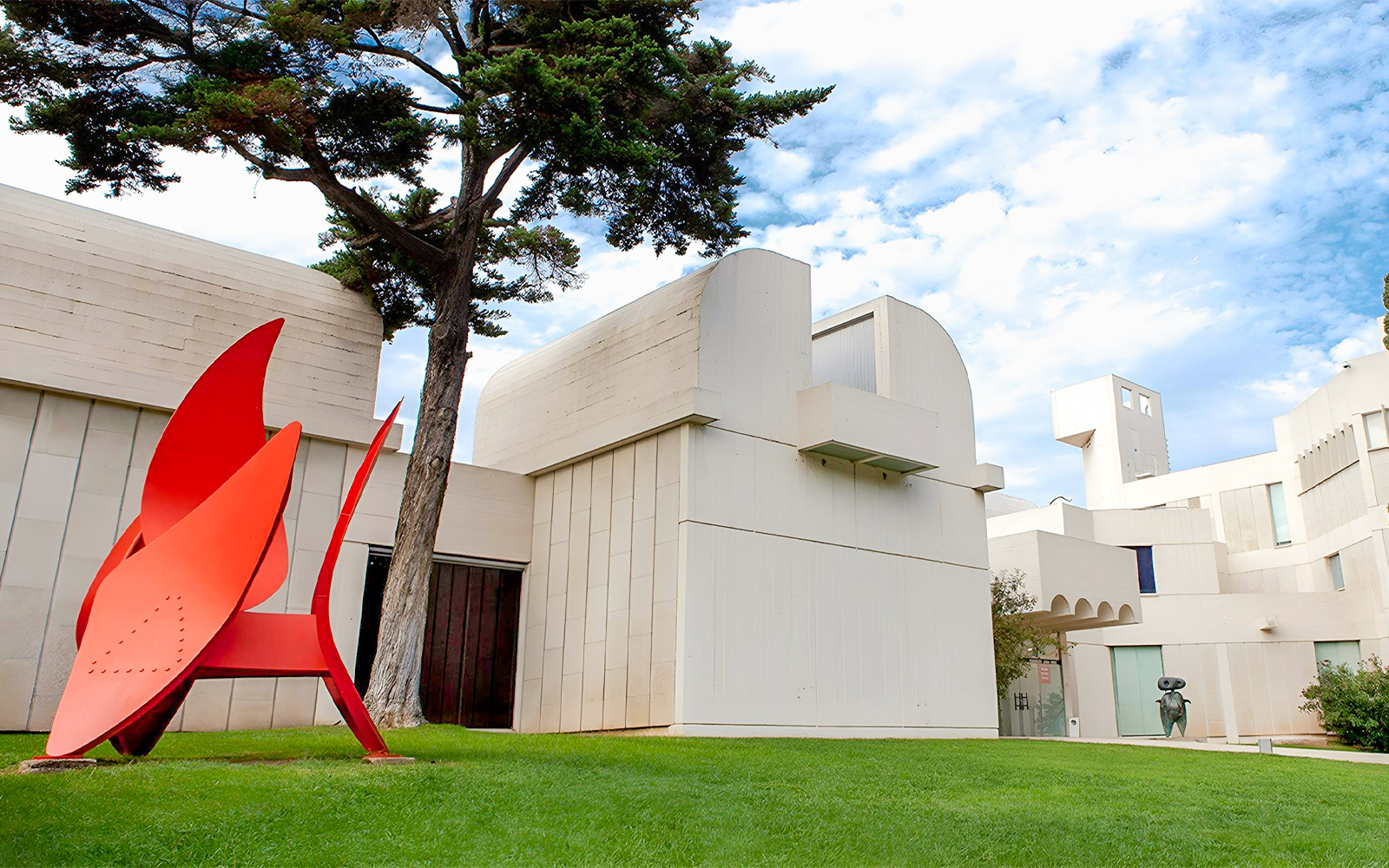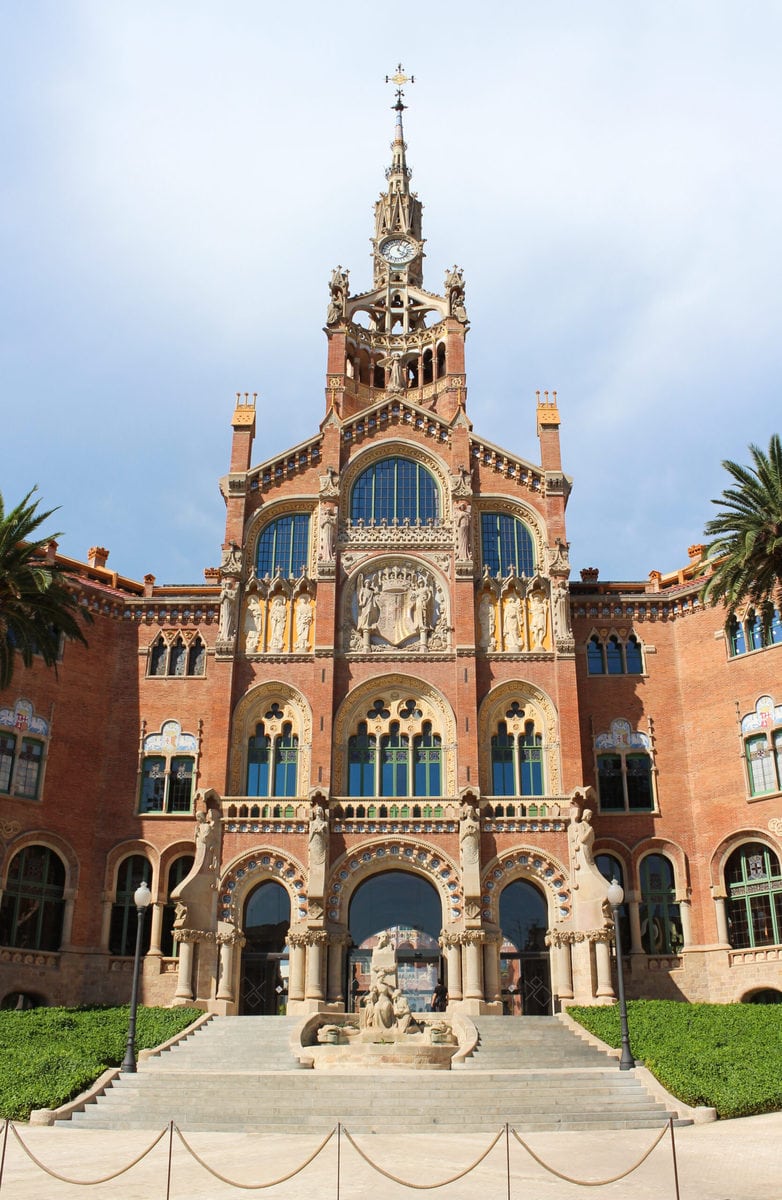What to See at Casa Batlló
Even from the street, Casa Batlló looks like something out of a dream. But inside, it’s even more mind-blowing.
- The Façade: The wavy, bone-like balconies and mask-shaped windows give it the nickname “House of Bones.” The façade is covered in shimmering ceramic tiles in blue, green, and purple tones, mimicking the surface of a calm sea.
- The Noble Floor: Formerly the Batlló family’s residence, this area features curved walls, oak doors, intricate ceilings, and a living room with windows that look like gills on a fish.
- The Light Well: Gaudí redesigned the building’s core to maximize natural light. A stunning blue-tiled atrium funnels light downwards, with darker tiles at the top and lighter ones below — a masterstroke of architectural illusion.
- The Rooftop: The undulating rooftop is shaped like the back of a dragon, complete with scaled tiles and whimsical chimneys that look like works of sculpture. From here, you’ll get excellent city views.
- Gaudí Cube & Immersive Rooms: One of the newest additions, this digital room offers a 360° projection of Gaudí’s imagination, bringing sketches and natural motifs to life in mesmerizing patterns and music.
A Short History of Casa Batlló
Originally built in 1877, the building was acquired in 1903 by textile industrialist Josep Batlló, who hired Gaudí to completely redesign it between 1904 and 1906.
Rather than demolish the building, Gaudí chose to transform it inside and out. He eliminated straight lines, opened up the interior to more light and ventilation, and created an organic, sea-inspired structure.
The Batlló family lived on the Noble Floor, while the upper levels were rented out. After changing ownership several times, the building was eventually opened to the public in the 1990s and underwent extensive restoration.
In 2005, Casa Batlló was declared a UNESCO World Heritage Site as part of the “Works of Antoni Gaudí.”
Today, it stands as a symbol of Catalan modernism and creative freedom.
Official website of Casa Batlló (EN): casabatllo.es

